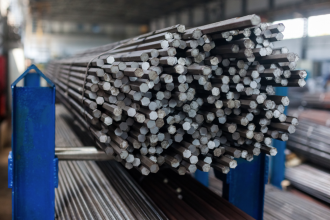
In any industry, proper storage of materials is an important issue. In some industries, improper storage can be expensive, or even deadly. Consider the case of the West Fertilizer Company of West, Texas, where an explosion injured 226 people and killed 15 employees and first responders in 2013. Investigators determined that the explosion was caused by improper storage of anhydrous ammonia or ammonium nitrate. The company was fined $118,000 and charged with additional citations.
Improper storage can cause injuries and equipment damage, slow down your production and cost you money. Here are some tips on how to avoid these problems by making sure you store these three common types of manufacturing items properly.
Storage Racks
Proper storage begins with proper use of storage racks. A large number of workplace injuries are caused by improper storage rack management. For instance, one worker was killed and seven people were injured when the worker was pulling orders in a Virginia warehouse freezer and a 30-foot-high storage rack collapsed, Fox News reports, drawing an OSHA fine for the employer.
Pallet racks typically collapse due to factors such as picking the wrong design, incorrect assembly, improper loading and unloading procedures, overloading, unstable floors and forklift driver negligence. These problems can be avoided by choosing the right type of rack for your application, having an experienced professional install it, following proper loading instructions, testing floors for safety and training forklift drivers to follow proper procedures. Larger items should be stored on lower parts of racks, with adequate space between racks to prevent problems when moved by lift trucks. Regular rack safety inspections are recommended.
Even when racks are used correctly, other factors can cause rack collapse. Kegs, drums and barrels should always be stacked individually on racks rather than stacked directly on top of each other, says OSHA. Cylindrical materials should be stored with blocks at each end so they don’t roll off. Stacks of lumber should be stacked no higher than 16 feet when loaded manually and 20 feet when loaded with equipment, and nails should be removed.
O-Rings
An under-appreciated but vitally important part of many pieces of manufacturing equipment is the o-ring. O-rings can be made out of a wide variety of specialized types of rubber, ranging from VitonViton to silicone to neoprene. Different materials are designed to support specific types of applications. For instance, standard Viton can tolerate a temperature range from -13 degrees F to 446 degrees F, and also has outstanding chemical resistance, making it suitable for applications such as sealing aircraft engines.
Choosing the right type of material for the application you’re using is one key to preventing damage during storage. Additionally, o-rings made from nitrile rubber (Buna-N) are prone to crack when exposed to ozone, so it’s important to take steps to prevent this. These include keeping them away from ultraviolet light, fluorescent bulbs and electrical arc sources such as electric motors. When installing o-rings, applying grease can provide further protection against ozone.
O-rings of all types should be stored at temperatures below 86 degrees F, with an average relative humidity between 40 and 70 percent, says The Seal Man’s O-Ring Handbook. Rings should be stored in an un-stretched state when possible, and when this is not possible, they should at least be stored in airtight packages when they’re not being used. Boxes of o-rings should be stored away from radioactive materials and from heavy objects that might fall on them, and should not be stored beneath excessive weights that can compress them. O-rings should be set into their mating components within one day after being installed to prevent damage.
Hazardous Materials
Hazardous materials present special storage concerns. These types of materials fall into a number of categories, including explosive materials, inflammable fluids and solids, compressed fluids and gasses, self-incendiary materials, materials that can ignite other materials, and poisonous and radioactive substances. Stored improperly, these types of materials can cause fires, explosions, chemical reactions, health hazards and environmental damage.
For safe storage of hazardous materials, follow all applicable regulations. Mark the location of all materials with weather-resistant labels. Use sealable containers that prevent leakage both out of and into stored materials, making sure the containers are compatible with the type of material being stored. Keep materials stored in an isolated area that is clearly marked and only accessible to authorized personnel. Create a secondary containment system for all containers used to store or transport hazardous materials and wastes. Make sure all workers are trained in proper handling procedures, including emergency procedures. Keep your emergency plan up-to-date, with current contact information.
Storage racks, o-rings and hazardous materials are three vital manufacturing items that call for proper storage. Following proper storage procedures for these items will help ensure that your equipment stays in working order and your workers and customers stay safe.
This is an article provided by our partners network. It might not necessarily reflect the views or opinions of our editorial team and management.
Contributed content

Founder Dinis Guarda
IntelligentHQ Your New Business Network.
IntelligentHQ is a Business network and an expert source for finance, capital markets and intelligence for thousands of global business professionals, startups, and companies.
We exist at the point of intersection between technology, social media, finance and innovation.
IntelligentHQ leverages innovation and scale of social digital technology, analytics, news, and distribution to create an unparalleled, full digital medium and social business networks spectrum.
IntelligentHQ is working hard, to become a trusted, and indispensable source of business news and analytics, within financial services and its associated supply chains and ecosystems




























